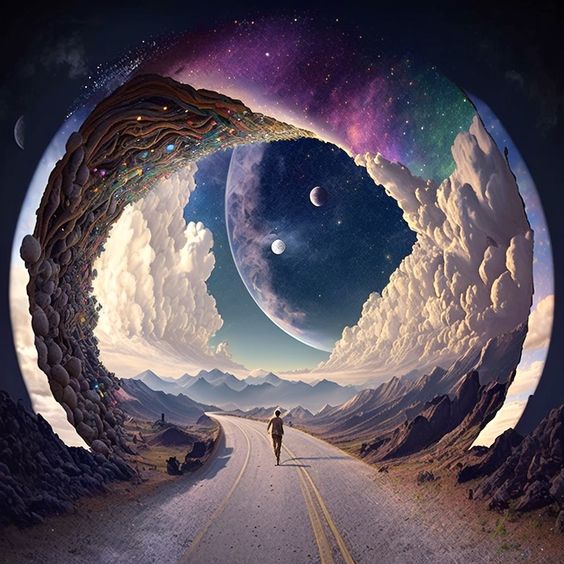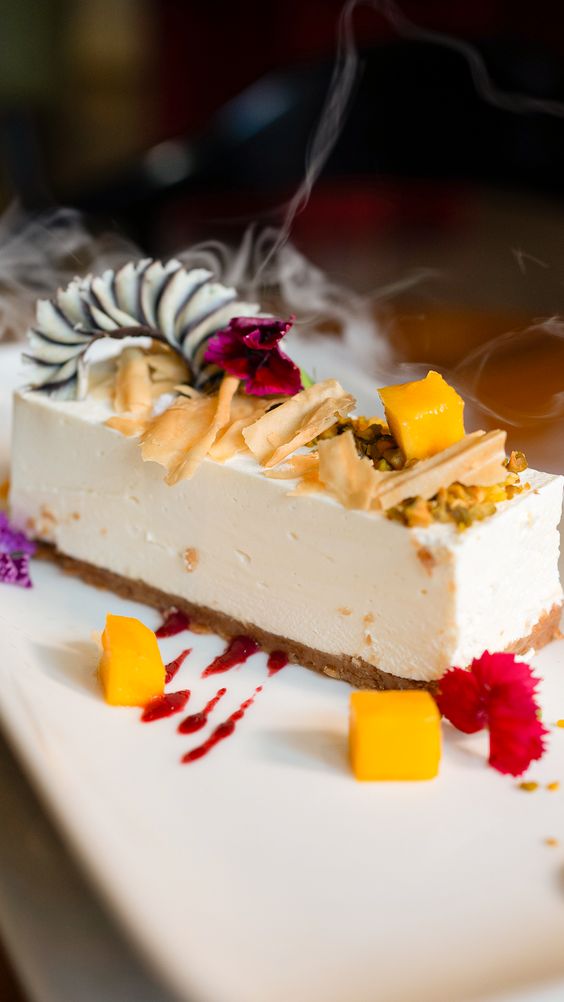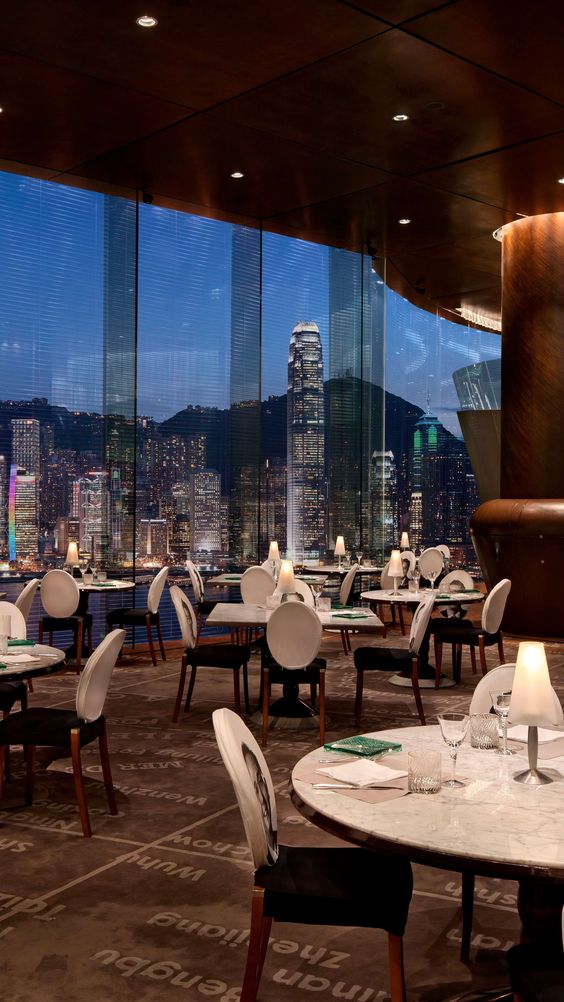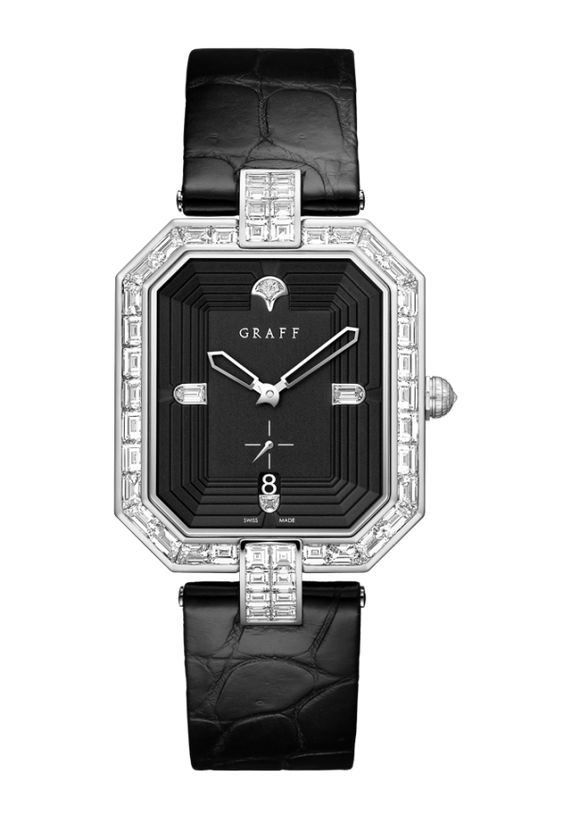Exclusive Collaborations: When High Fashion Meets Art and Culture

In the dynamic realm of contemporary creativity, exclusive collaborations between high fashion, art, and culture have become a powerful catalyst for innovation and expression. The convergence of these diverse disciplines brings about a harmonious synergy, forging a unique space where aesthetics intertwine seamlessly. Fashion, as a transitory form of expression, transcends its traditional boundaries by embracing the intrinsic value of art and culture, creating a rich tapestry of style that resonates with a global audience.
Fashion, inherently dynamic, thrives on the constant evolution of trends and styles. The infusion of art and culture into this ever-changing landscape elevates fashion to a new echelon of sophistication. Designers actively seek inspiration from various art movements and cultural traditions, resulting in collections that serve as visual narratives, weaving stories that transcend mere clothing. This symbiotic relationship propels fashion beyond the realm of mere attire, transforming it into a powerful medium for storytelling and cultural exchange.
In these exclusive collaborations, transitive words such as “blend,” “merge,” and “fuse” become the operative terms, reflecting the seamless integration of fashion, art, and culture. Artists and designers consciously intertwine their creative processes, producing garments that are not just articles of clothing but tangible expressions of cultural identity and artistic vision. This transformative approach fosters a sense of inclusivity, bridging the gap between diverse artistic realms.
As the fashion industry continues to embrace these collaborations, the resulting creations serve as a testament to the dynamic interplay between fashion, art, and culture. This intersection not only enriches the aesthetic landscape but also fosters a deeper understanding of the interconnectedness of these creative spheres, inviting individuals to engage with fashion as a multifaceted art form that goes beyond the superficial and taps into the essence of human expression.
The Fusion of High Fashion and Art: A Creative Alliance
In the contemporary landscape, the marriage of high fashion and art forms a dynamic and symbiotic relationship, fostering a creative alliance that transcends traditional boundaries. This union gives rise to a fusion where fashion becomes a canvas for artistic expression, creating a harmonious blend that resonates with cultural nuances. High fashion actively seeks to intertwine with various art forms, embracing a transitive approach that goes beyond mere stylistic trends.
Art, with its ability to convey emotions and ideas, serves as a catalyst for innovation in the realm of fashion. Designers, in their pursuit of creativity, incorporate artistic elements into their collections, resulting in garments that transcend the ordinary and become wearable masterpieces. This collaborative process involves a deliberate blending of diverse cultural influences, weaving a narrative that goes beyond aesthetics and delves into the cultural fabric of society.
The creative alliance between high fashion and art is characterized by a continuous exchange of ideas, materials, and techniques. Fashion designers actively collaborate with artists, bringing their unique perspectives into the realm of clothing design. This active collaboration ensures that the resulting creations are not only visually striking but also carry a profound cultural significance. The interplay between fashion and art becomes a transformative force, redefining the boundaries of both disciplines.
As this fusion unfolds, the cultural impact becomes increasingly evident. The runway transforms into an immersive gallery, and fashion collections become curated exhibits that celebrate the interconnectivity of fashion, art, and culture. This dynamic alliance serves as a testament to the power of creativity in transcending conventional norms, inviting individuals to engage with fashion as a living canvas that reflects the rich tapestry of human expression.
Defining Luxury Through Collaboration
Luxury, in its contemporary definition, finds itself redefined through the intricate tapestry woven by collaborations between fashion, art, and culture. This transformative alliance actively shapes the narrative of opulence, turning luxury from a static concept into a dynamic, evolving experience. High-end fashion brands, with a keen eye on innovation, engage in transitive partnerships with artists and cultural influencers, creating a synergy that transcends traditional notions of luxury.
In the realm of fashion, luxury is no longer confined to the materiality of garments; it extends to the immersive experience crafted through collaborative endeavors. Designers actively seek to infuse their creations with elements of art and cultural richness, resulting in collections that are not just exclusive in terms of craftsmanship but also carry a profound narrative. This narrative is often woven from threads of cultural heritage, giving luxury fashion a depth that resonates with a discerning audience.
The collaboration between luxury fashion houses and artists is an active dialogue, where ideas are exchanged, and boundaries are pushed. The transitive nature of this partnership ensures a seamless integration of artistic expression into the fabric of luxury, creating a unique fusion that goes beyond mere aesthetics. The result is a cultural tapestry that elevates luxury beyond its material trappings, turning it into a storytelling medium that speaks to the confluence of artistic visions.
As these collaborations redefine luxury, they also redefine the consumer’s engagement with high-end fashion. Luxury becomes an invitation to participate in a cultural conversation, fostering an appreciation for artistry and cultural depth. In this dynamic interplay, the collaboration between fashion, art, and culture becomes a transformative force, shaping the very essence of what it means to indulge in luxury in the modern era.
Cultural Narratives in Fashion Collaborations
Fashion collaborations serve as vibrant canvases where cultural narratives come to life through an active dialogue between designers, artists, and diverse cultural influences. The dynamic interplay of fashion, art, and culture in these collaborations results in a storytelling medium that transcends the traditional boundaries of both the runway and the gallery. Designers actively engage in a transitive exploration, weaving cultural elements into their collections, transforming garments into narratives that echo the rich tapestry of human experience.
In this evolving landscape, fashion becomes a vessel for cultural expression, fostering a deeper connection between the garment and its cultural roots. Designers actively seek to infuse their creations with the essence of diverse cultures, creating collections that are not just visually stunning but also imbued with cultural significance. The collaborative process becomes a conscious effort to blend artistic expression with the ethos of different societies, ensuring that each piece tells a unique story.
The active incorporation of cultural narratives in fashion collaborations goes beyond surface-level aesthetics. It becomes a deliberate effort to promote cross-cultural understanding and appreciation. The transitive exchange of ideas, materials, and techniques in these collaborations ensures that the resulting creations resonate with a global audience, breaking down cultural barriers.
As fashion evolves into a powerful storytelling medium, these collaborations become a celebration of diversity and a recognition of the interconnectedness of the world’s cultural heritage. The runway transforms into a stage where cultural narratives unfold, and each collection becomes a chapter in the larger book of humanity, illustrating the enduring impact of fashion as a cultural bridge.
Iconic Collaborations: Case Studies
The annals of fashion history are punctuated with iconic collaborations that have left an indelible mark on the intersection of fashion, art, and culture. These case studies illuminate the transformative power of active partnerships, where designers and artists engage in a transitive exchange of ideas, resulting in groundbreaking creations that redefine the boundaries of creative expression.
One exemplary case study is the collaboration between renowned fashion house Chanel and contemporary artist Jeff Koons. This dynamic pairing saw Koons infusing his signature pop art aesthetic into Chanel’s classic handbags, turning each accessory into a wearable piece of art. The transitive nature of this collaboration not only elevated the status of these handbags but also highlighted the symbiotic relationship between high fashion and contemporary art.
Another noteworthy case study is the collaboration between luxury brand Louis Vuitton and Japanese artist Yayoi Kusama. This partnership resulted in a collection where Kusama’s distinctive polka dots and vibrant colors seamlessly merged with Louis Vuitton’s iconic monogram. The active interplay between fashion and art in this collaboration created a visual spectacle that resonated with global audiences, showcasing the potential of such partnerships to transcend cultural boundaries.
These case studies underscore the transformative impact of collaborations on the cultural landscape. By actively intertwining fashion, art, and culture, these partnerships have become touchstones, influencing subsequent generations of designers and artists. The lessons gleaned from these iconic collaborations serve as a testament to the enduring power of creative alliances in shaping the ever-evolving narrative of fashion and its intersection with art and culture.
The Role of Technology in Collaborative Projects
In the contemporary landscape where fashion, art, and culture converge, technology emerges as a dynamic catalyst in fostering collaborative endeavors. Active engagement with cutting-edge tools and platforms transforms traditional creative processes, pushing the boundaries of what is achievable in collaborative projects. The transitive integration of technology into the collaborative space has become pivotal in shaping the way fashion, art, and culture intersect.
Fashion designers and artists are utilizing advanced software, 3D printing, and augmented reality to revolutionize their collaborative ventures. These tools allow for the seamless blending of artistic visions with fashion concepts, giving rise to immersive experiences that transcend conventional boundaries. The active incorporation of technology into the collaborative process ensures that the resulting creations are not only visually stunning but also reflective of the rapid advancements in the digital realm.
Technology serves as a bridge, connecting creatives across geographical distances. Virtual collaboration platforms enable designers and artists from diverse cultural backgrounds to engage in real-time, fostering a truly global exchange of ideas. This transitive interaction breaks down barriers, facilitating a more inclusive and diverse approach to fashion, art, and culture.
The active role of technology in collaborative projects extends beyond the creative process to the presentation and dissemination of the final creations. Social media platforms and digital exhibitions provide a global stage for these collaborations, amplifying their impact and reaching audiences on a scale previously unimaginable. As technology continues to evolve, its role in shaping the collaborative landscape between fashion, art, and culture becomes increasingly integral, propelling these creative alliances into new and uncharted territories.
Challenges and Triumphs: Navigating Collaborative Spaces
In the intricate dance between fashion, art, and culture, collaborative spaces offer a fertile ground for innovation, yet they also present a unique set of challenges. Active participation in these realms demands a delicate balance between creative freedom and the constraints imposed by different disciplines. Navigating these collaborative spaces requires artists and fashion designers to actively engage with the transitive complexities that arise during the creative process.
One of the primary challenges lies in bridging the gap between divergent artistic languages. Fashion, with its dynamic trends, often clashes with the more enduring and contemplative nature of art. Achieving a harmonious synthesis demands an active dialogue between creators, navigating the transitive landscape of contrasting aesthetics to produce a cohesive vision that speaks to both disciplines.
Cultural nuances add another layer of complexity to collaborative projects. Negotiating the delicate threads of heritage and tradition requires an active understanding of the cultural context in which the collaboration unfolds. Triumph in these spaces comes from an active appreciation and integration of diverse cultural elements, creating a narrative that resonates with a global audience.
While challenges abound, the triumphs of successful collaborations are profound. Breaking through the barriers of conventionality, these collaborations become transformative forces, shaping the narrative of fashion and art. The triumph lies in the creation of something greater than the sum of its parts – a transcendent piece that reflects the active interplay between fashion, art, and culture. In overcoming challenges, collaborative spaces become crucibles for creativity, forging alliances that redefine the very essence of creative expression.
Beyond Wearables: Art Installations and Fashion Exhibitions

Fashion and art have evolved beyond the confines of traditional wearables, finding new avenues of expression through immersive art installations and dynamic fashion exhibitions. In these active spaces, the transitive relationship between fashion, art, and culture takes center stage, offering audiences an opportunity to engage with creativity in multifaceted ways.
Art installations in the realm of fashion actively break free from the constraints of the runway, becoming interactive experiences that transcend the conventional boundaries of art and culture. These installations serve as vibrant canvases where fashion designers collaborate with artists to create visually stunning environments. The active blending of fashion into the installation becomes a transformative act, turning spaces into living galleries that tell stories beyond the limitations of traditional clothing.
Fashion exhibitions, on the other hand, actively curate collections that go beyond mere displays of garments. They become immersive experiences where the transitive nature of fashion is explored through thematic narratives, showcasing the interconnectedness of fashion, art, and culture. The active involvement of curators, designers, and artists ensures that these exhibitions become dynamic expressions of creativity, transcending the passive viewing experience.
These non-traditional spaces actively challenge the notion of fashion as a mere commodity. The immersive nature of art installations and fashion exhibitions transforms the passive observer into an active participant, fostering a deeper connection with the narratives woven into each piece. As fashion continues to evolve, these dynamic spaces become integral in shaping the collective understanding of fashion as a living, breathing art form that actively engages with the broader realms of culture and artistic expression.
Cultural Impact: Collaborations and Social Change
Collaborations between fashion, art, and culture wield a transformative power that extends beyond aesthetics, actively influencing societal norms and contributing to social change. These dynamic alliances become agents of cultural impact, fostering a transitive relationship that resonates with diverse audiences, transcending the realm of mere trends.
Fashion collaborations, when intertwined with cultural narratives, have the potential to challenge and reshape societal perceptions. Designers and artists actively utilize their creations to address cultural issues, engaging in an active dialogue that stimulates conversations on inclusivity, diversity, and social justice. Through the transitive lens of collaboration, fashion becomes a powerful vehicle for cultural commentary, sparking a ripple effect that permeates the broader social fabric.
Art, in collaboration with fashion, becomes a visual medium for expressing cultural identities and challenging preconceived notions. Exhibitions and installations actively engage with societal narratives, using the language of art to prompt reflection and conversation. The transitive nature of these collaborations ensures that the cultural impact is not confined to a specific niche but permeates mainstream discourse.
Beyond aesthetics, these collaborations become catalysts for social change by actively promoting cultural understanding and appreciation. By embracing diversity in all its forms, fashion and art collaborations challenge societal norms, fostering a more inclusive and tolerant ethos. As cultural impact becomes an inherent aspect of these collaborations, they contribute to a broader societal shift, actively shaping the way people perceive and engage with the interconnected realms of fashion, art, and culture.
The Future Landscape of Fashion, Art, and Culture Collaborations
As we gaze into the future, the landscape of fashion, art, and culture collaborations appears poised for a paradigm shift, driven by an active integration of innovative technologies and an expanding focus on sustainability. The transitive relationship between these realms is set to evolve, creating a dynamic tapestry that reflects the changing tides of creativity and societal values.
In the active pursuit of innovation, technology is expected to play a pivotal role in shaping the future of collaborations. Virtual reality, augmented reality, and artificial intelligence will become transitive tools that fashion designers and artists leverage to push the boundaries of creative expression. These advancements will transform traditional runway shows and art exhibitions into immersive experiences, actively engaging audiences in dynamic narratives that transcend the physical confines of space.
Sustainability, a keyword echoing throughout various industries, is poised to become an even more central theme in future collaborations. Fashion and art will actively seek to address environmental and social concerns, creating pieces that not only showcase artistic brilliance but also actively contribute to a more sustainable and equitable future. The transitive commitment to eco-conscious practices will redefine the narrative of fashion collaborations, aligning them with the growing global movement towards responsible and ethical consumption.
Furthermore, the future promises a deeper integration of cultural diversity into collaborations. With an active emphasis on inclusivity, fashion and art will increasingly draw inspiration from a myriad of cultural influences, fostering cross-cultural understanding and celebrating the richness of global heritage. As the future unfolds, these collaborations will actively shape the cultural landscape, contributing to a world where the interconnected realms of fashion, art, and culture actively reflect and influence societal values and aspirations.







